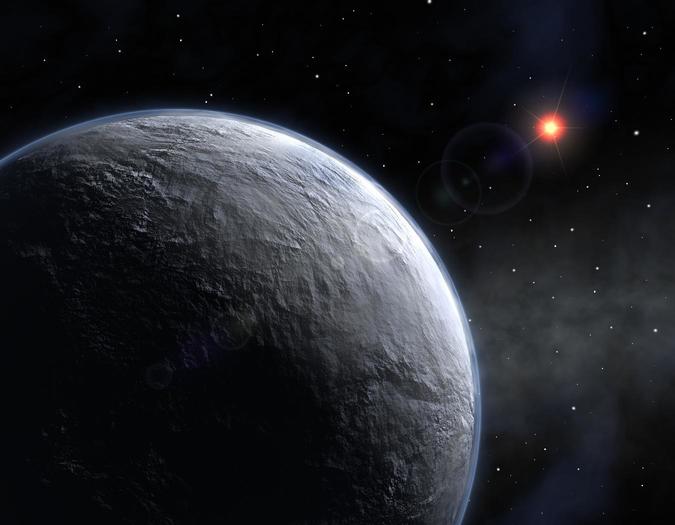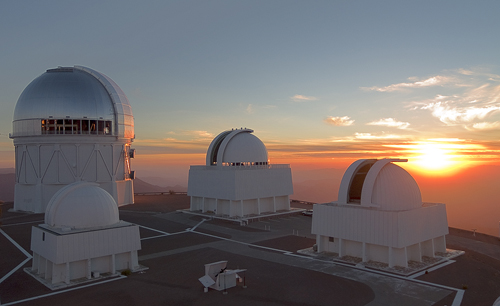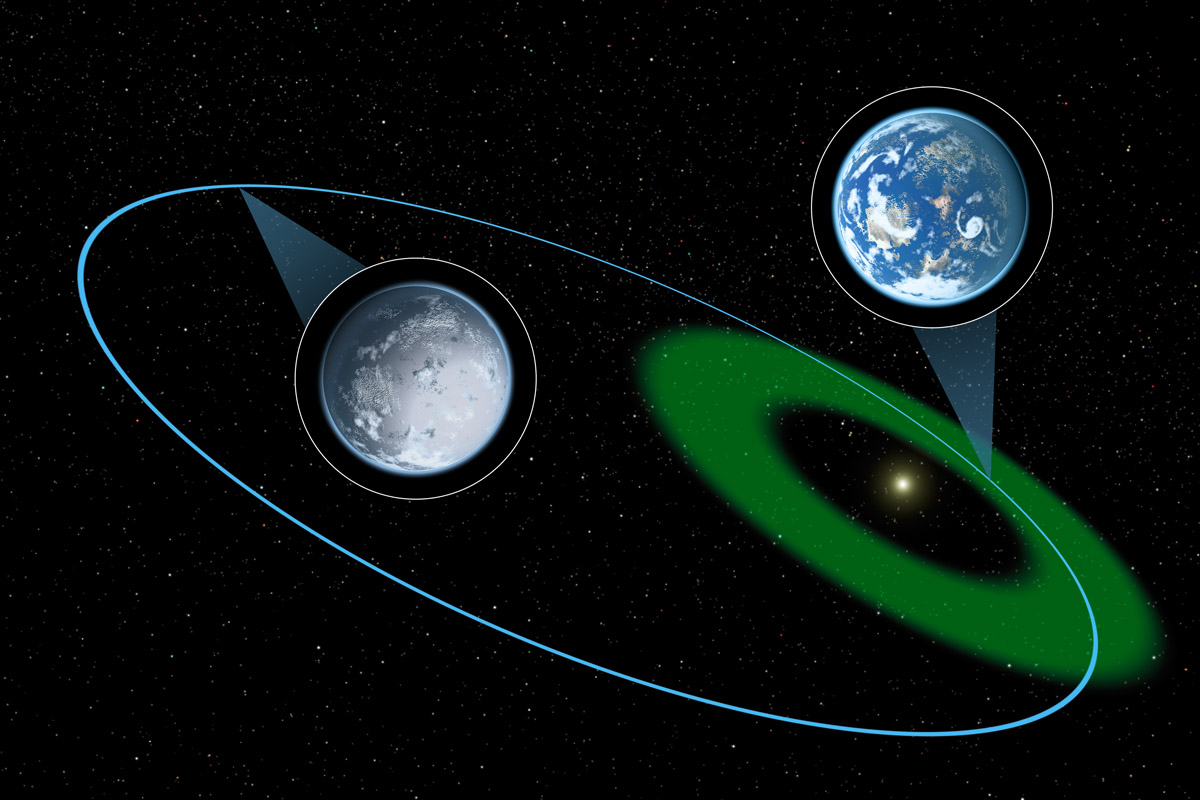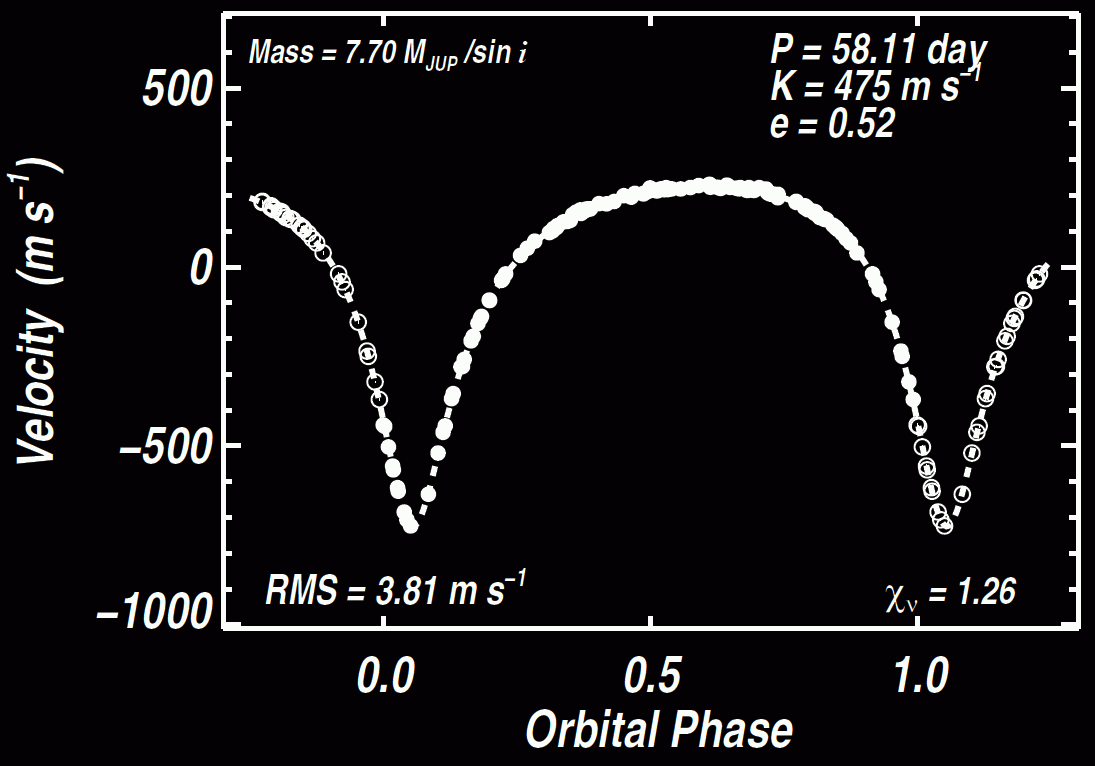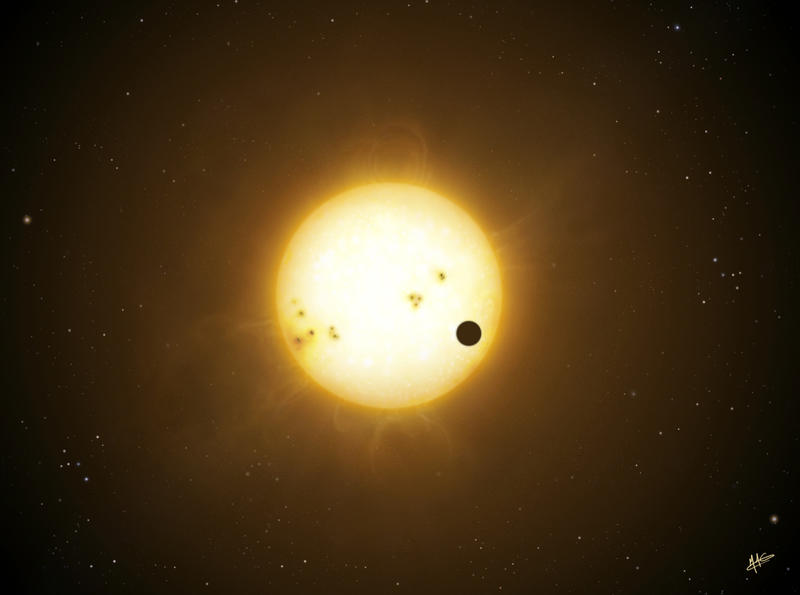Home
About
Research
People
Links
|
Research
The research undertaken within the Planetary Research Laboratory
covers a wide range of disciplines and may be broadly categorized into
the topics of Detection, Characterization, and Habitability. The below
diagram summarizes some topics within each category.
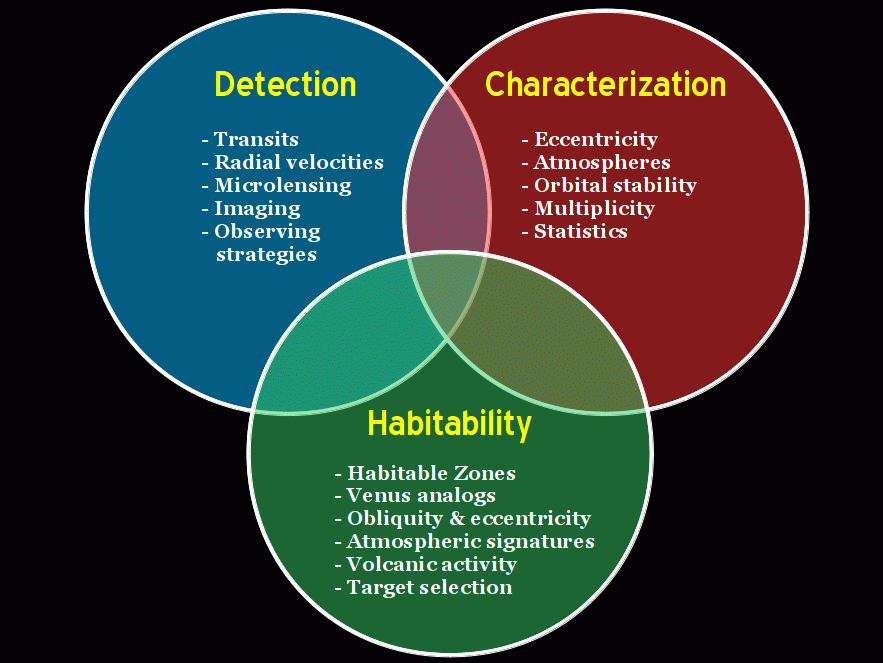
Below are examples of research projects within the group.
- Detection of Exoplanets: Searches for exoplanets from this group
use radial velocity and photometric data utilizing the microlensing,
transit, and doppler techniques.
- Exoplanet Habitability: This project calculates Habitable Zones
for all the known exoplanet host stars, including confirmed
exoplanets and Kepler candidates. The data and figures are updated
regularly and made available to the community via
the Habitable Zone Gallery.
- The TERMS Project:
The Transit
Ephemeris Refinement and Monitoring Survey (TERMS) both refines
the orbits and searches for transits of known radial velocity
planets. This is a multi-institutional collaboration which utilises
many telescopes including Keck, Lick 3.0m, HET, and various
photometric installations.
- Discovery of Venus Analogs: The difference between Venus and Earth
in terms of mass and size is subtle enough to remain
indistinguishable to current detection methods. This project defines
the ``Venus Zone''
where runaway greenhouse atmospheres occur and examines the
detectable atmospheric signatures of such atmospheres.
- Planetary Rotation, Obliquity, and Albedos: The DSCOVR spacecraft
has been successfully deployed to L1 where the EPIC instrument
acquires high resolution images of the Earth's daylit side. We are
leading a project to use DSCOVR data to simulate recovery of
rotation, obliquity, and albedos for future exoplanet direct imaging
missions.
- Exoplanetary Phase Variations: This project models planetary phase
variations at multiple wavelengths, particularly those in eccentric
orbits, in order to characterize surface and atmospheric
properties. These techniques are being applied to MOST, Spitzer, and
Kepler data.
- Frequency of Ice Giants: The analogs of Uranus and Neptune are
difficult to detect using current exoplanet detection
techniques. This study investigates the detection prospects and
applies the methods to various survey data.
|
